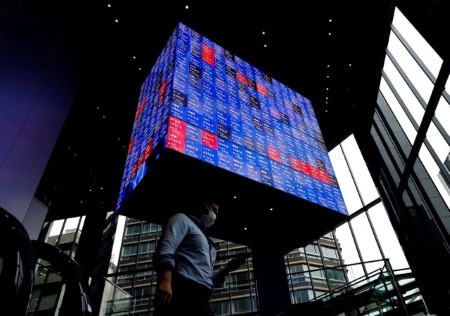




Quarterly Economic Growth Release: More BSP cuts to come
 DOWNLOAD
DOWNLOAD

Monthly Economic Update: Fed catches up
 DOWNLOAD
DOWNLOAD

Inflation Update: Steady and mellow
 DOWNLOAD
DOWNLOAD


S&P 500 ends lower, weighed down by Nvidia dip

The S&P 500 finished lower on Monday, with AI heavyweight Nvidia dipping ahead of its quarterly report this week, while investors awaited inflation data for clues about the path of interest-rate cuts by the Federal Reserve.
The tech-heavy Nasdaq also declined, but the Dow Jones Industrial Average was supported by gains of about 1% each in Caterpillar and American Express and finished just slightly up.
Nvidia dropped 2.25% ahead of its report on Wednesday in what is set to be the US stock market’s most closely watched event of the week.
Some investors worried that anything short of a stellar forecast from Nvidia could shatter Wall Street’s rally in AI-related companies, including Microsoft, Alphabet, and Meta Platforms.
“Nvidia could disappoint. I think when you get to the point where the majority doesn’t even suspect that there could be a piece of bad news, that’s typically where you get it,” warned Jake Dollarhide, chief executive of Longbow Asset Management in Tulsa, Oklahoma.
US-listed shares of PDD Holdings tumbled almost 29% after the Temu-owner missed market expectations for second-quarter revenue.
Tesla lost 3.2% after Canada, following the lead of the US and European Union, said it would impose a 100% tariff on imports of Chinese electric vehicles.
The S&P 500 declined 0.32% to end the session at 5,616.84 points.
The Nasdaq declined 0.85% to 17,725.77 points, while Dow Jones Industrial Average rose 0.16% to 41,240.52 points.
Of the 11 S&P 500 sector indexes, six declined, led lower by information technology, down 1.12%, followed by a 0.81% loss in consumer discretionary.
The energy sector index jumped 1.11% following reports of oil supply disruptions amid the geopolitical conflict in the Middle East lifted crude prices.
Boeing slipped 0.85% after NASA picked SpaceX over the planemaker’s Starliner to return its astronauts from space next year.
Wall Street rallied on Friday, with the S&P 500 nearing record highs after Fed Chair Jerome Powell said “the time has come” to lower borrowing costs in the light of a diminishing upside risk to inflation and moderating labor demand.
Money markets suggest traders see a 70% chance of a 25 basis point interest rate cut and a 30% chance of a 50 basis point cut in September, according to the CME Group’s FedWatch tool.
Friday’s highly anticipated Personal Consumption Expenditure data for July, the central bank’s preferred inflation gauge, could provide more insight into the policy easing trajectory.
Results from Dell, Salesforce, Dollar General, and Gap are on tap this week.
Advancing issues outnumbered falling ones within the S&P 500 by a 1.1-to-one ratio.
Across the US stock market, declining stocks outnumbered rising ones by a 1.2-to-one ratio.
Volume on US exchanges was relatively light, with 9.5 billion shares traded, compared to an average of 11.9 billion shares over the previous 20 sessions.
(Reporting by Johann M Cherian and Purvi Agarwal in Bengaluru; Editing by Pooja Desai and David Gregorio)
This article originally appeared on reuters.com





 By Reuters
By Reuters